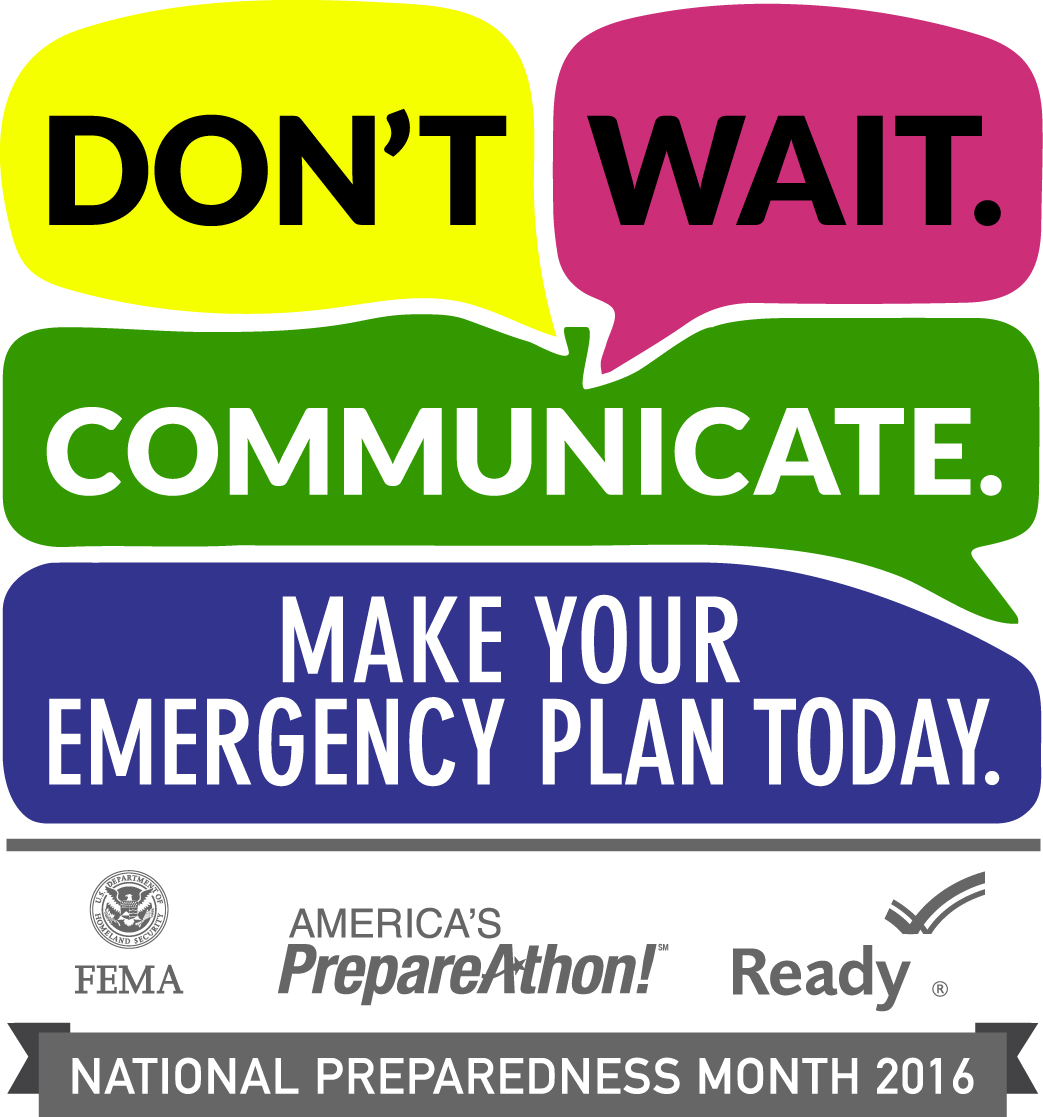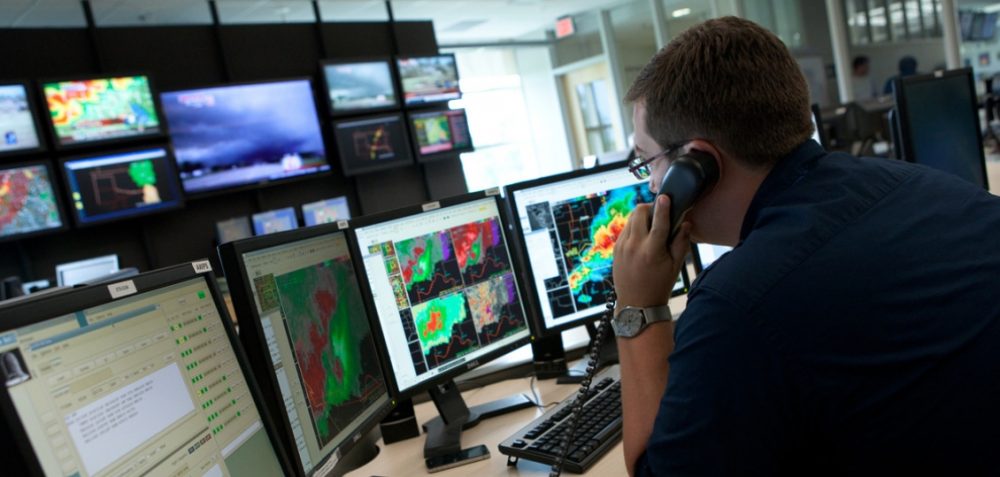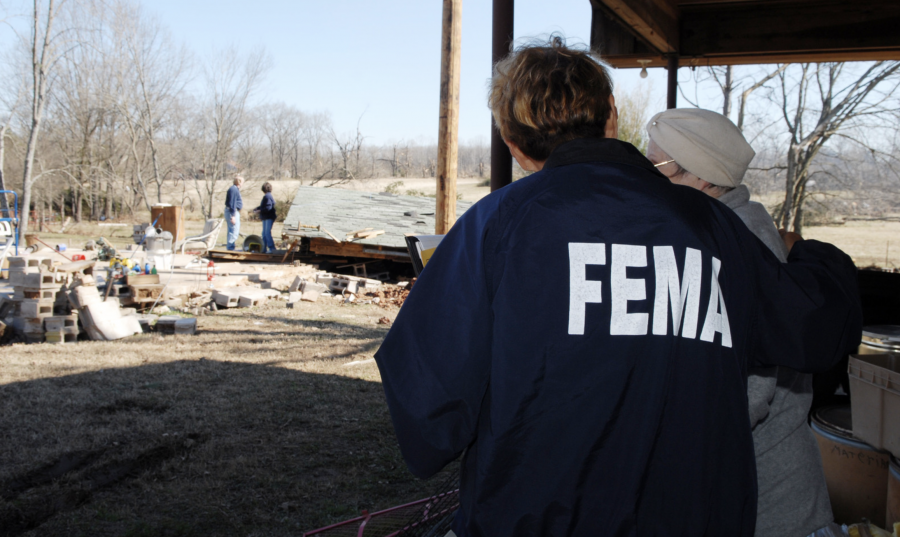How FEMA Helps Communities Prepare for Disaster
Since September is National Preparedness Month, today seemed like a good day to write about it. In the course of the last 24 hours, I’ve been working on issues with the Louisiana floods, an earthquake in Italy, hurricane predictions for both Florida and the Gulf Coast, and the continuing wildfires in the west. People often […]

The logo for National Preparedness Month 2016.

Since September is National Preparedness Month, today seemed like a good day to write about it. In the course of the last 24 hours, I’ve been working on issues with the Louisiana floods, an earthquake in Italy, hurricane predictions for both Florida and the Gulf Coast, and the continuing wildfires in the west.
People often treat disasters as something that only happens to someone else—someone far, far away. But they can happen to you and me too. And they do every day. So it pays to take a few minutes to think about them.
To get some background information, I called one of my colleagues at FEMA. Surprised? Like you, there was a time when I only associated FEMA with blue tarps and emergency relief. But as their role has grown, and the number of disasters has grown, FEMA has increasingly begun to focus on preparedness and mitigation.
Here are a few excerpts from my interview with Denise Gilliam, who is the Philanthropic Advisor within the Voluntary Agency Coordination Section of FEMA.
CDP: Is FEMA involved in pre-disaster work?
FEMA: FEMA is very involved in planning and preparedness work and even has a Preparedness Division that offers a variety of programs.
CDP: Why? With all of FEMA’s responsibilities, why planning and preparedness?
FEMA: The focus here is on reducing risk. Preparing for a disaster can save millions of tax dollars and prevent deaths.
CDP: Does FEMA offer grants or programs in planning and preparedness?
FEMA: The programs differ from region to region depending on the types of disasters that a region normally experiences. Grants are usually distributed through various state agencies down to municipalities, rather than to individuals. In general FEMA offers preparedness grants, mitigation programs, and buyout programs.
CDP: Can you give a few examples?
FEMA: In states with flooding, FEMA is helping to pay for elevating private homes. In areas with tornadoes, FEMA is supporting the construction of safe rooms. In other places FEMA is helping to buy-out homes that have been destroyed or are in vulnerable areas.
CDP: How can foundations work with FEMA on planning and preparation?
FEMA: Often our programs require a local match or cost share. We’ve had a number of foundations recently pay the local share in order to help bring a prevention program to their community.
CDP: From your vantage point, what’s the biggest problem that foundations make when it comes to providing grants for disaster-related activities?
FEMA: I’m surprised at the number of times that foundations provide grants for items that FEMA covers and is willing to pay. We need to improve collaboration between FEMA and the philanthropic community to better leverage our collective resources so we make sure there aren’t overlaps—or gaps—in funding.
CDP: What’s the biggest mistake that individuals make with planning and preparation?
FEMA: Not listening. Sometimes it’s as simple as listening to weather forecasts and taking action to get out of harm’s way. Take a few minutes to do an assessment of potential disasters for your community.
Denise Gilliam of FEMA can be reached at Denise.Gilliam@fema.dhs.gov.
Help prepare yourself, your family, and your community with these FEMA preparedness resources:
- Are You Ready? Guide
- FEMA mobile app for disaster resources, weather alerts, and safety tips
- FEMA National Preparedness Month Toolkit
More like this

What the Government Shutdown Really Means to Disasters

